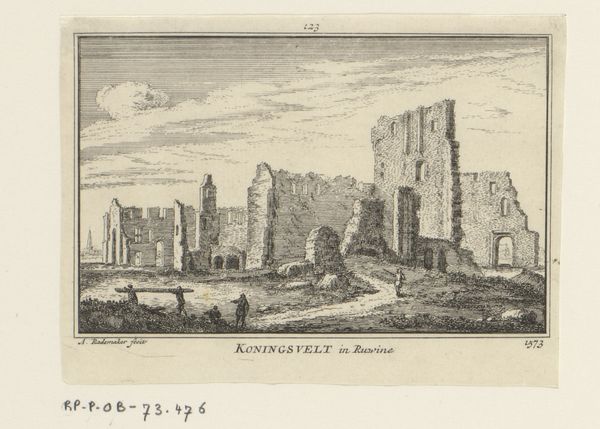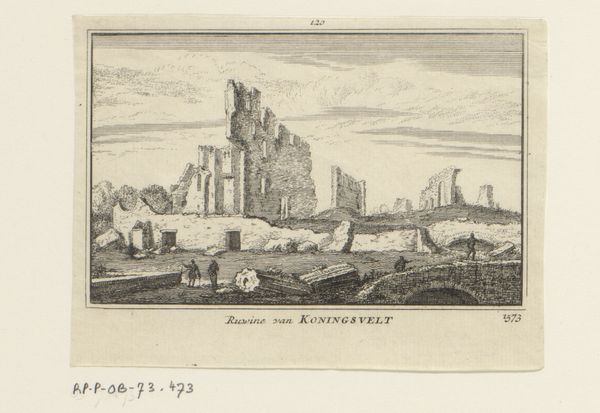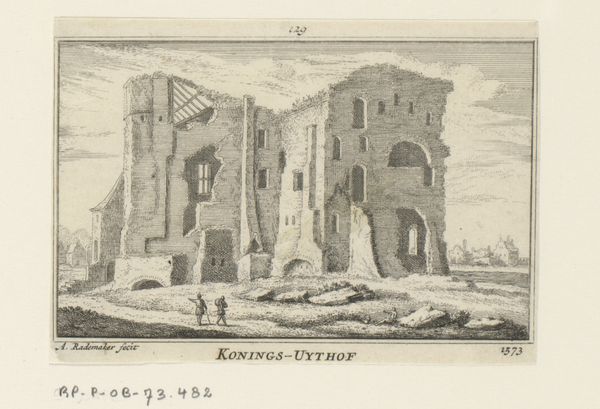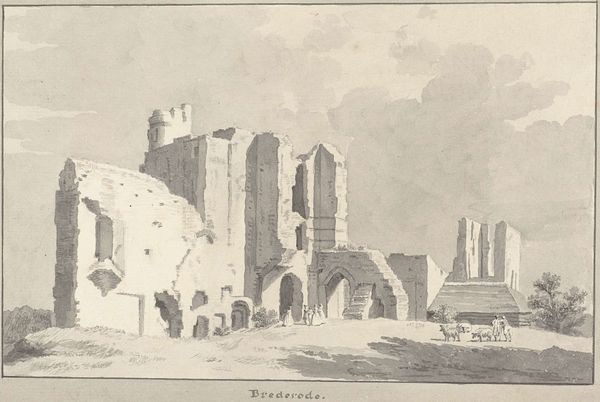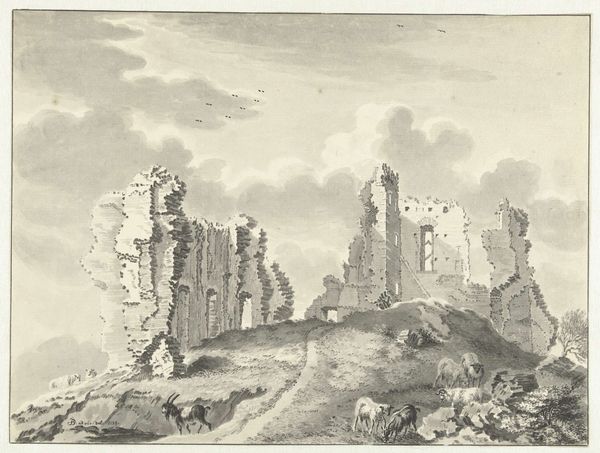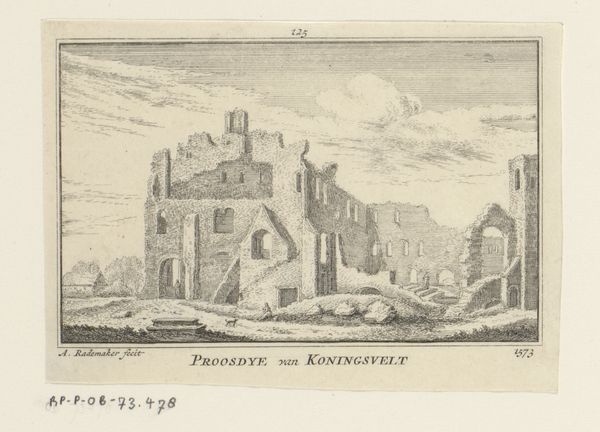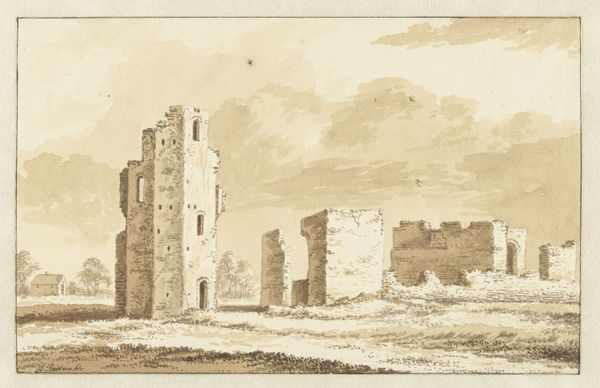
Gezicht op de ruïne van het kartuizerklooster bij Delft, 1573 1727 - 1733
0:00
0:00
print, engraving, architecture
#
baroque
# print
#
old engraving style
#
landscape
#
engraving
#
architecture
Dimensions: height 80 mm, width 115 mm
Copyright: Rijks Museum: Open Domain
Curator: This engraving, created between 1727 and 1733 by Abraham Rademaker, captures the remains of the Carthusian monastery near Delft. The title given is “Gezicht op de ruïne van het kartuizerklooster bij Delft, 1573,” which is quite interesting, given the dating. Editor: It evokes a sense of melancholy. The skeletal structures against what appears to be an open sky give me pause to reflect on how much we change over time. Even grand institutions, eventually succumb. Curator: Indeed. Rademaker, who dedicated much of his career to illustrating Dutch landscapes and historical sites, here presents the scene with an almost clinical detachment, focusing on the architectural details even in their dilapidated state. Notice the accuracy in depicting the crumbling walls and the pointed arches characteristic of Gothic architecture. Editor: Right, but there's also an implicit narrative woven in: the fall of religious power, perhaps? Monasteries held enormous social and political sway. Showing its decay, even unintentionally, gives the viewer a perspective into shifting power structures and secularization that touches upon identity, and even the political, within the historical moment depicted. Curator: I see your point. While the focus seems to be on a visual record for future generations, ruins like these, so close to major cities, often became powerful symbols. These abandoned spaces became canvases for emerging social attitudes towards the Church itself. Editor: And perhaps even our relationship with the very concept of permanence, too. The figures included really do give this sense of reflection, of contemplation; the scale and size also suggest this passage of time and change. We still hold onto the date though…1573 feels an odd fit here! Curator: I agree! Though seemingly straightforward in its execution, it’s a reminder of the ways historical events—be they religious, social, or artistic—leave their indelible marks on the landscape and how it becomes depicted later. Editor: Absolutely. I think Rademaker invites us to not just see the ruin, but to ask: who benefits from documenting decay, and what dialogues emerge? It’s a reminder to actively engage with history and challenge dominant narratives!
Comments
No comments
Be the first to comment and join the conversation on the ultimate creative platform.


